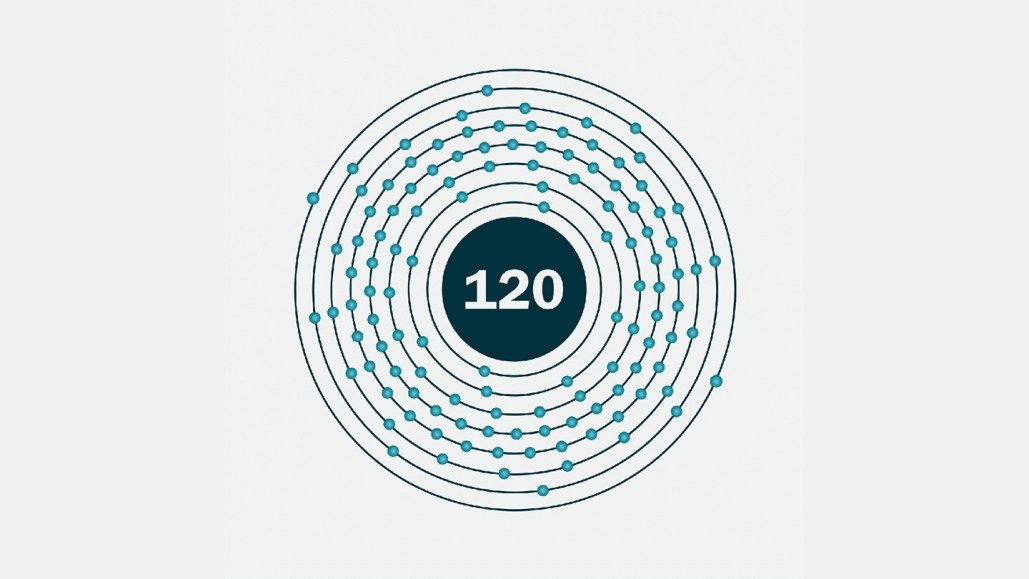A New Element on the Periodic Table Could Soon Be Discovered

To expand the periodic table, it might be time to go titanium.
A new study lays the groundwork to expand the periodic table with a search for element 120, to be made by slamming electrically charged titanium atoms, or ions, into a californium target. If produced, the new element would have an atomic nucleus brimming with 120 protons and would occupy a new row of the periodic table.
In a proof-of-principle experiment, scientists created the known element livermorium, element 116, using titanium for the first time. The experiment focused a beam of titanium ions onto a target of plutonium. After 22 days of searching, the effort yielded two atoms of livermorium, researchers reported July 23 at the Nuclear Structure 2024 meeting in Lemont, Ill. A similar experiment, aimed at creating element 120, is feasible and would take about 10 times as long, the researchers predict.
Science News has partnered with Trusting News to gather feedback on the potential use of AI in journalism. Currently, we do not publish any content produced by generative AI (see our policy). We do want to hear your views on how Science News could use AI responsibly. Let us know by participating in a short 10 question survey.
The periodic table currently has 118 chemical elements (SN: 11/30/16). The five heaviest elements were all produced using a beam of calcium-48. That’s a variety, or isotope, of calcium with 28 neutrons in its nucleus. To produce those different heavy elements, scientists swapped out the target element. The more protons in the nucleus of the target element, the further along the periodic table the product would be.
But that tactic has become untenable: The next possible targets are radioactive and short-lived, says nuclear scientist Jacklyn Gates of Lawrence Berkeley National Laboratory in California, who presented the result at the meeting. Hence the switch to beams of titanium-50, which will allow scientists to search for new elements with more practical targets. (The target material for element 120 is easier to work with than for 119, which is why the scientists are skipping an element.) “If you want to push above what we currently know on the periodic table, you need to find a new way of making heavy elements.”
Questions or comments on this article? E-mail us at [email protected] | Reprints FAQ
J. Gates. Pursuing new superheavy elements: progress update from Berkeley Lab. Nuclear Structure 2024, Lemont, Ill., July 23, 2024.
Physics writer Emily Conover has a Ph.D. in physics from the University of Chicago. She is a two-time winner of the D.C. Science Writers’ Association Newsbrief award.
We are at a critical time and supporting climate journalism is more important than ever. Science News and our parent organization, the Society for Science, need your help to strengthen environmental literacy and ensure that our response to climate change is informed by science.
Please subscribe to Science News and add $16 to expand science literacy and understanding.




